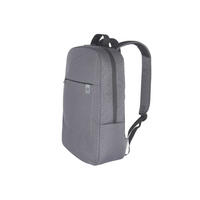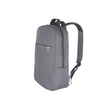5 Things to Consider When Buying a Business Projector

Buying an Office Projector: 5 Things to Consider
Office projectors have been a workspace essential for many years, and it’s safe to say there’s hardly a business on this planet that doesn’t have one in their meeting rooms. But projectors can do so much more than just display slideshows and spreadsheets, and they’ve found their way into every nook and cranny of the office, ready to unleash their potential. Now, how do you find the one that’s tailor-made for your needs? And how can you elevate your office environment by using them beyond the confines of the meeting room? Everything you need to know is just a scroll away!
Read on to discover how to choose the perfect business projector for your needs. Or explore ViewSonic’s full range of lamp-free office projectors here.
How to Choose the Best Office Projector: 5 Key Factors
When it comes to choosing the best business projector for your office, there are several crucial factors to consider that can greatly impact on the overall user experience. Here are five key considerations to help you make an informed decision:
1. Ambient Lighting Condition & Room Size
We’ve all been in presentations held in brightly lit meeting rooms where slide readability was a challenge. Selecting the appropriate brightness level is perhaps the most crucial step when purchasing an office projector, and two key factors influence this decision: the room’s size and lighting conditions.
Whether you need a meeting room projector or one for your lobby, begin by evaluating the typical lighting conditions and installation location. For small-to-medium rooms accommodating around 10 people (such as a meeting room), a projector with a brightness rating of 3,000-4,999 ANSI Lumens is generally suitable. For brightly lit boardrooms or larger conference rooms accommodating 10-20 people, a projector with a brightness of 5,000-6,999 ANSI Lumens is recommended to ensure a satisfactory experience, especially when the lights are on. Lastly, for expansive spaces like auditoriums or training rooms, opt for a projector with 7,000 ANSI Lumens or higher.
2. Light Source
Another essential factor to consider is the projector’s light source. There are three main types of projectors in this regard: lamp, LED, and laser. Lamp projectors, the most common option, are generally more affordable upfront. However, they typically require more maintenance effort, with the lightbulb needing replacement approximately every 5,000 hours, leading to higher long-term costs as well. On the other hand, lamp-free projectors (LED and laser) come with a higher initial price tag but offer a longer light source lifespan of up to 60,000 hours without the need for lamp replacement. This saves on long-term maintenance costs in terms of time, manpower, and money, offering a lower total cost of ownership. Additionally, they provide efficient usage with instant power on/off capability, eliminating waiting times before and after use.
Lamp-free projectors are also more environmentally friendly, as they don’t rely on mercury lightbulbs for illumination. If your company aims to minimize its environmental impact, perhaps as part of an ESG policy (Environment, Social, and Governance), LED and laser business projectors are an excellent choice.
3. Installation Flexibility
One of the primary advantages of business projectors, compared to other display types, is their installation flexibility. Whether you want to mount them on the ceiling, position them on a table, place them near the screen, or position them at the back of the room, there’s always a suitable option. They can even project in portrait mode if desired. By choosing the right features, setting up an office projector becomes a hassle-free process without the need for extensive room reconfiguration.
Throw Ratio
The throw ratio is crucial in determining the distance required between the projector’s placement and the wall to achieve the desired projected screen size. Projectors are typically categorized into three main categories based on their throw ratio: ultra-short, short, and standard throw. For instance, to project a 100-inch screen, an ultra-short-throw projector with a 0.25 throw ratio may only need 28 cm of distance, while a short-throw projector with a 0.49 throw ratio may require 1.08 m of distance. In contrast, a standard-throw projector with a 1.30 throw ratio might need a distance of 2.88 m from the screen to achieve the same result.
Now, which throw ratio should you choose? It depends on your specific usage, room size, layout, and desired screen size. Ultra-short throw and short-throw projectors are ideal for short-distance projection in smaller spaces, such as small meeting rooms or lobbies, as they provide shadow-free projection. Conversely, in larger conference rooms or venues where space is not a concern, a standard throw projector is often the more suitable option.
Lens Shift, Keystone Correction, Optical Zoom
To seamlessly install a projector without altering your interior design, consider features like lens shift and optical zoom. Lens shift offers the flexibility to adjust the location of the projected image horizontally or vertically without moving the projector. Optical zoom enables you to choose the most ideal setup location within a wider throw distance range without affecting your interior design, all while achieving the desired image size. When considering image adjustment, keystone correction, and 4-corner adjustment are essential. They allow you to get a perfectly aligned image from any projection angle. Additionally, in spaces with a curved surface, the warping feature will adapt your screen to the shape of the surface, offering an engaging viewing experience.
Product Size & Weight
The size and weight of projectors are frequently overlooked, despite their significant impact on installation efforts and transportation costs, especially when buying in bulk. Typically, higher brightness equates to larger and heavier projectors, making them less convenient for installation and transport. If you’re in search of a compact projector with high brightness, consider the latest models adopting 3rd generation phosphor laser technology, addressing both size and weight concerns.
360-degree Projection & Portrait Mode
If you’re seeking more creative projection capabilities, for spaces like lobbies or visual experience centers, it’s worth considering LED and Laser projectors. Unlike traditional lamp projectors that are restricted due to safety concerns and heat dissipation issues, these projectors allow for 360-degree projection, enabling content display at various angles on ceilings, walls, and floors.
Furthermore, a portrait mode feature enables vertical projection without complex setups, making it suitable for showcasing building and architectural designs, digital signage, and more. It’s a nice-to-have feature if you plan to use your projector for multiple purposes.
4. Convenient Operation & Maintenance
While they might not be the first things that come to mind when searching for an office projector, several other features can significantly impact day-to-day usage. Connectivity is a prime example. Small additions like dual HDMI or USB-A power output can greatly enhance users’ experiences. Dual HDMI permits the default connection of a device, such as a desktop, while keeping a spare cable for guests or an HDMI wireless dongle. Meanwhile, a USB-A power output can directly power that dongle, eliminating the need for an additional adapter and reducing cable clutter.
If you intend to use your office projector beyond the meeting room, LAN control might be worth considering. This feature enables remote and centralized management of the projectors, enhancing operational efficiency. Some projectors also support firmware updates via USB from a laptop, eliminating the necessity of sending the unit to a customer service center and minimizing downtime.
5. Resolution
Last but not least, resolution should be a key consideration when choosing a business projector, and the intended usage is crucial here. For a meeting room projector used primarily for presentations, WXGA resolution is sufficient. However, if you aim for more visually impressive displays, like projection mapping on your company’s logo or an introductory video in the lobby or reception hall, it’s recommended to opt for a projector with a minimum of 1080p resolution. This higher resolution guarantees sharp and professional visuals, displaying intricate slideshows, carefully selected videos, and images with precision.

Exploring Real-Use Cases of Office Projectors
Projectors are now more versatile than ever and can be used in many scenarios around the office beyond mere presentations, video conferences, or interactive collaborations. Understanding the various use cases of business projectors can inspire creativity, help you prioritize features, and tailor them to your office’s specific requirements.
Reception
The reception is the first space in your office that guests will encounter when visiting. Businesses can use this opportunity to project their logos, introduction videos, or recent company achievements, effectively transforming otherwise static walls or floors into dynamic brand displays that leave a lasting impression. For instance, using projection mapping techniques, you can display your company logo on various surfaces, including objects with alphabetical shapes.
Public Area & Elevator Hall
Public area and elevator hall can be transformed into engaging focal points with projectors. Regardless of the type of content you wish to display – dynamic visuals, informative content, or artistic installations onto walls, projectors can project your visuals with versatile applications such as edge blending, creating an immersive atmosphere.
Training Hall & Auditorium
From seminars to workshops, projectors facilitate effective communication by displaying crucial content to a wider audience which fosters engagement and comprehension, making complex topics more accessible.
Communal Room
Projectors bring an exciting dimension to a company’s communal room for team-building activities or fun bonding experiences with colleagues over a movie or video game, strengthening team dynamics and work relationships which can lead to a happier workplace and smoother collaboration.
Fitness Center
Companies are more aware of the benefit of physical exercise in promoting happiness by having a fitness center or yoga studio within the office building. Projecting calming landscapes during yoga or forest trails during biking on a large screen can create an engaging workout experience.

Final Thoughts
Choosing the right office projector can be a daunting task especially when there are many available options in the market. Prioritize and narrow down your options using the top 5 factors like ambient lighting conditions and room sizes, light source, installation flexibility, convenient operation and maintenance, and resolution when choosing a business projector. With the right office projector, you can enhance your company’s brand image, create visually impactful presentations for clients, and strengthen dynamics and collaboration.





